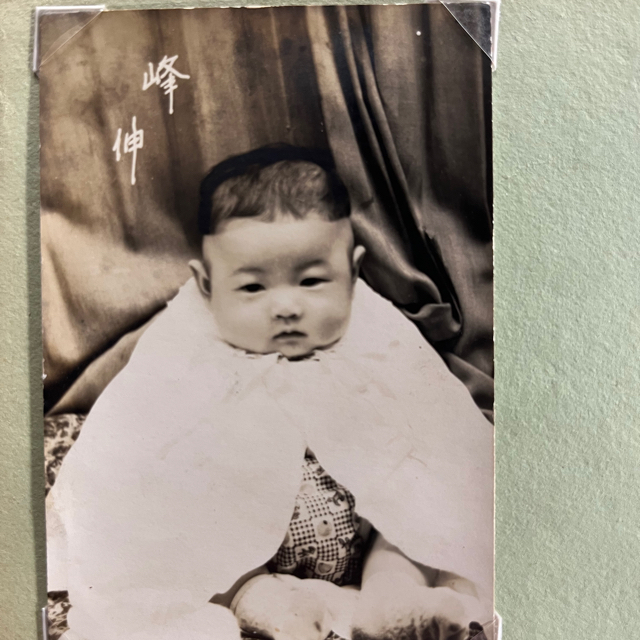歴史学者・大山誠一教授(中部大学)「厩戸皇子は実在したが、その後の所謂、聖徳太子の業績とされる十七条の憲法などの業績の主人公としての聖徳太子は、実在せず」と説を張っている。
よく聖徳太子を教えていないとか教科書にないとかいう根拠は、仏教の描く聖徳太子が不自然であることによる。我が世代は隠された十字架を思い出す。
『隠された十字架』(かくされたじゅうじか)は、哲学者・梅原猛が著した評論。副題に「法隆寺論」とあるように、法隆寺に関して論じている。雑誌『すばる』(当時は季刊誌)に3回にわたって連載され、1972年(昭和47年)5月に新潮社から単行本が出版された。
日本に到来したユダヤ人はエフライム族と言う主張、その久保有政のその他の本も読んでみるか。 三笠宮は8日目の割礼が皇族に伝わると証言したという。明治時代、森有礼(もりありのり1847-1889)文部大臣は、「八咫鏡(やたのかがみ)の裏にヘブル語で『エヘイエ・アシェル・エヘイエ(我は在りて有る者、出3:14)』と書かれているのを見た」と語ったという。本当かどうかは確かめることは容易なはず、それをしないのは真実性を色濃くする。明治天皇の孫の中丸薫氏も「天皇家では生後8日目の割礼が行われて来ました」と証言した。以下のことからも天皇家がユダヤの一族を起源とすることは明確と思われる。小林隆利証言。明治天皇の皇女 仁内親王はご子息の、小林隆利氏に「父はこう言われた。私は天皇の権限で日本の歴史を調べたが、神道は元々ユダヤ教として日本にもたらされ、そして後に原始キリスト教に習合」されたと語っているという。明治天皇が嘘つきでない限りいずれも信用できる伝聞である。
『わたしはあなたに多くの子を与えよう。あなたをふやし、あなたを多くの民のつどいとし、 またこの地をあなたの後の子孫に与え、永久の所有としよう。』今、私がエジプトに来る前に、 エジプトの地で生まれたあなたのふたりの子は、私の子となる。 エフライムと マナセは ルベンや シメオンと同じように私の子にする。」 (創世記48:3~5)
聖徳太子時代の神道は「唯一神教」だった! 「唯一神教の神道」である。 『古事記』『日本書紀』がつくられた8世紀より前の時代の神道は、唯一の神を崇拝する宗教だった。多くの証拠がそれを物語っている。 聖徳太子が習った神道も、「宗源道」という唯一神教の神道だった。
ヨシュア記14章
イスラエルの人々が、カナンの地で受けた嗣業の地は、次のとおりである。すなわち、祭司エレアザル、ヌンの子ヨシュア、およびイスラエルの人々の部族の首長たちが、これを彼らに分かち、
2 主がモーセによって命じられたように、くじによって、これを九つの部族と、半ばの部族とに、嗣業として与えた。
3 これはヨルダンの向こう側で、モーセがすでに他の二つの部族と、半ばの部族とに、嗣業を与えていたからである。ただしレビびとには、彼らの中で嗣業を与えず、
4 ヨセフの子孫が、マナセと、エフライムの二つの部族となったからである。レビびとには土地の分け前を与えず、ただ、その住むべき町々および、家畜と持ち物とを置くための放牧地を与えたばかりであった。
5 イスラエルの人々は、主がモーセに命じられたようにおこなって、その地を分けた。
In fact, His Imperial Highness Prince Mikasa is also an archaeologist, and his research into the Orient and Israel is extraordinary.
One might even suggest that his research is based on a strong desire to explore the origins of the imperial family. Even the fact that Prince Mikasa speaks Hebrew at will makes me think that he must have had an even more inquisitive mind.
Mr H of Osaka’ claims to have heard from His Imperial Highness Prince Mikasa that the rumour of Hebrew characters on the back of the Yatagamiko is true, while Rabbi Marvin Tokayer's book states: ’The Jewish Mr Tokayer is a Jew, but he is not a Hebrew-speaking person.
Rabbi Tokayer, who is Jewish, once asked Prince Mikasa himself in Hebrew about the rumours surrounding the Yatagagamira.
When I first met Prince Mikasa, I asked him if the rumour was true that there were Hebrew characters written on the back of the Yata-mirror, which is preserved at the Grand Shrine at Ise. ・・・・
Prince Mikasa replied that he himself was familiar with the contents of the newspaper article that reported it. However, as for the sacred artifact now preserved in the Grand Shrine at Ise, it is surrounded by a very thick wall of secrecy and is so sacred, so mysterious, that Prince Mikasa himself had never seen the Yatagamirako.
He was also not allowed to see the Yata no Kagami with his own eyes. His brother, the Emperor, had also never seen the Yata no Kagami.
It is impossible for anyone alive today to see the Yata no Kagami. Therefore, no one alive today would be able to confirm whether or not the mirror had Hebrew written on the back of it.
Prince Mikasa himself was very suspicious of the reports. However, he said that this issue should not be the subject of normal conversation.
Everything related to these three sacred objects is surrounded by a thick taboo among the Japanese people. So the answer was that even at court, no one from the imperial family would discuss the matter.
The mirror of the Grand Shrines of Ise is covered with a canopy and housed in a box. Therefore, no one can open the box.
During the transfer ceremony of the Grand Shrine of Ise, the person carrying it had to turn around and hold the box. The box containing the yata no kagami was said to be a ‘funadai’ in the shape of a boat.
This may mean that the sacred object was brought from far away by ship.
One might even suggest that his research is based on a strong desire to explore the origins of the imperial family. Even the fact that Prince Mikasa speaks Hebrew at will makes me think that he must have had an even more inquisitive mind.
Mr H of Osaka’ claims to have heard from His Imperial Highness Prince Mikasa that the rumour of Hebrew characters on the back of the Yatagamiko is true, while Rabbi Marvin Tokayer's book states: ’The Jewish Mr Tokayer is a Jew, but he is not a Hebrew-speaking person.
Rabbi Tokayer, who is Jewish, once asked Prince Mikasa himself in Hebrew about the rumours surrounding the Yatagagamira.
When I first met Prince Mikasa, I asked him if the rumour was true that there were Hebrew characters written on the back of the Yata-mirror, which is preserved at the Grand Shrine at Ise. ・・・・
Prince Mikasa replied that he himself was familiar with the contents of the newspaper article that reported it. However, as for the sacred artifact now preserved in the Grand Shrine at Ise, it is surrounded by a very thick wall of secrecy and is so sacred, so mysterious, that Prince Mikasa himself had never seen the Yatagamirako.
He was also not allowed to see the Yata no Kagami with his own eyes. His brother, the Emperor, had also never seen the Yata no Kagami.
It is impossible for anyone alive today to see the Yata no Kagami. Therefore, no one alive today would be able to confirm whether or not the mirror had Hebrew written on the back of it.
Prince Mikasa himself was very suspicious of the reports. However, he said that this issue should not be the subject of normal conversation.
Everything related to these three sacred objects is surrounded by a thick taboo among the Japanese people. So the answer was that even at court, no one from the imperial family would discuss the matter.
The mirror of the Grand Shrines of Ise is covered with a canopy and housed in a box. Therefore, no one can open the box.
During the transfer ceremony of the Grand Shrine of Ise, the person carrying it had to turn around and hold the box. The box containing the yata no kagami was said to be a ‘funadai’ in the shape of a boat.
This may mean that the sacred object was brought from far away by ship.

























